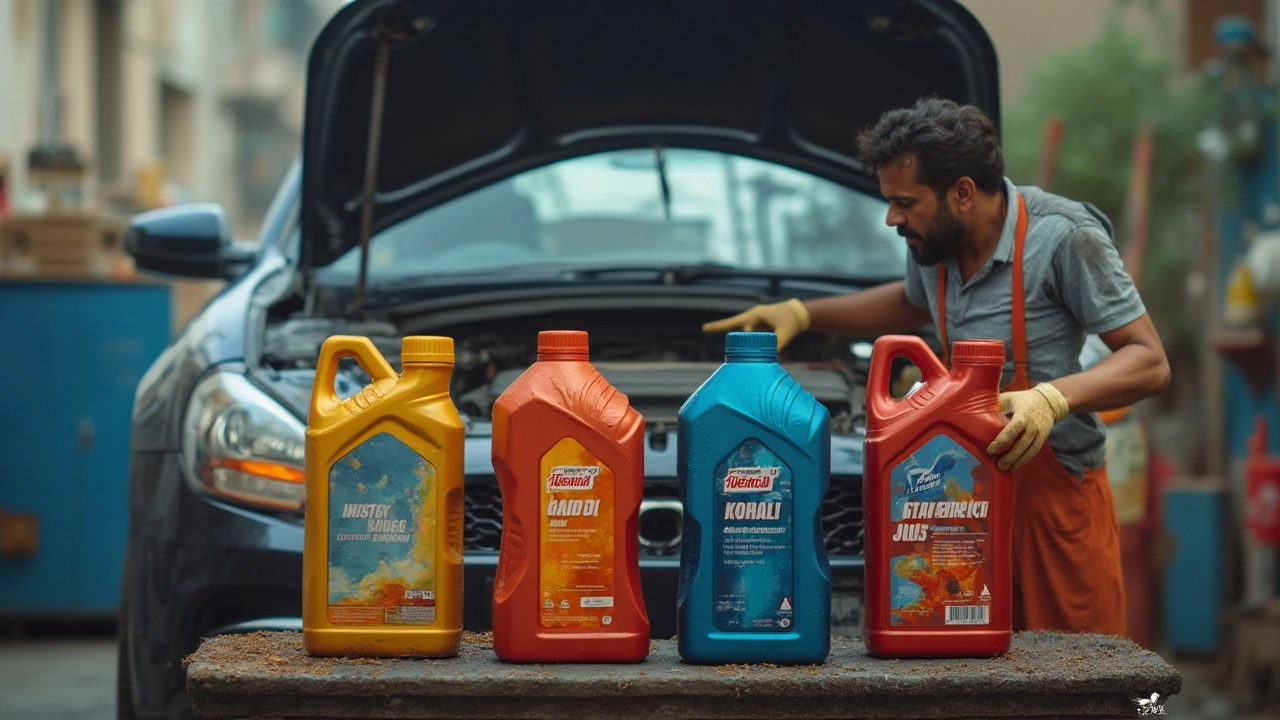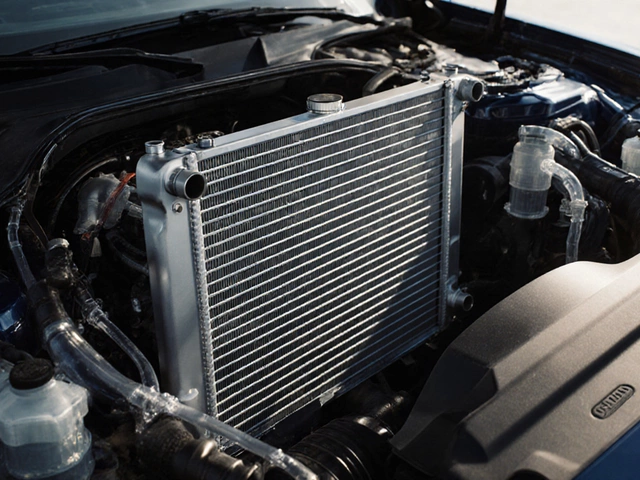
Ever wondered if it really matters what oil you pour in your engine? There’s a reason car manuals make such a big deal about using synthetic, and it isn’t just about fancy branding. When you swap synthetic out for regular oil, you’re changing how your engine handles heat, dirt, and daily wear—sometimes in ways that can cost you big time down the road.
Regular oil might seem just fine at first, but it breaks down faster, especially if you push your car with highway drives or long city commutes in traffic. Synthetic is built to stay stable at higher temps and doesn’t gunk up as easily, which keeps the engine running smoother and protects moving parts. If your engine calls for synthetic, switching to regular can mean more sludge, quicker oil changes, and even more engine noise.
If you just made the swap and you’re feeling anxious, don’t panic. It’s not an instant disaster, but it’s not something you want to make a habit of either. We’ll break down why it matters, what you might notice if you’ve been running regular instead of synthetic, and how you can fix it without a huge hassle.
- Regular vs Synthetic Oil: What’s the Actual Difference?
- Engine Performance: What Changes When You Use Regular Oil?
- Potential Engine Problems and Wear
- Warranty and Manufacturer Recommendations
- How to Fix an Oil Mix-up and What To Do Next
- Simple Tips: How To Always Pick the Right Oil
Regular vs Synthetic Oil: What’s the Actual Difference?
Most folks grab a bottle of oil based on price or whatever’s on sale, but not every oil is built the same. At the core, synthetic oil comes from highly refined base oils and added chemical boosters. Regular oil—also called conventional oil—starts with crude oil and gets minimal processing. That one change makes a pretty big difference in how both oils perform inside your engine.
The big win with synthetic oil is how it handles heat and stress. It’s built in a lab to stay slick, so it doesn’t thicken or break down as quickly. Regular oil, on the other hand, loses its punch faster especially if you drive hard, deal with stop-and-go traffic, or face hot summers. Synthetics also fight “sludge,” the gunk that can choke oil passages in your engine. That means less risk of weird noises, ticking, or even expensive breakdowns.
Here’s a simple look at how they stack up:
| Feature | Regular Oil | Synthetic Oil |
|---|---|---|
| Base Material | Crude oil refined a few times | Engineered base + additives |
| Resistance to Heat | Breaks down at 250-275°F | Stable up to 400°F and above |
| Protection Against Sludge | Mediocre | Very high |
| Longevity | 3,000-5,000 miles | 7,500-15,000 miles |
| Price (per quart) | $4–$6 | $8–$12 |
One quick fact here: over 70% of new cars in 2025 recommend or require synthetic oil, according to recent automaker specs. That means automakers are betting on its benefits for engine life and efficiency. Sure, regular oil is cheaper, but those savings disappear if you have to change it more often or face costly repairs down the line.
It’s not just hype—synthetic oil is lab-tested to last longer, protect better, and deal with the heat and grime that today’s engines throw at it. Understanding these differences helps you pick the right oil and avoid surprises under the hood.
Engine Performance: What Changes When You Use Regular Oil?
If you ditch synthetic and pour in regular oil, your engine's performance isn't going to fall apart overnight. But you are losing some real advantages, and you might start noticing stuff most drivers want to avoid. Regular oil just doesn't protect or last like synthetic, and that can creep up on your engine, especially if you drive a lot or live somewhere hot or cold.
Synthetic oil is made to deal with more heat, stay slicker under stress, and keep your engine cleaner. Regular oil, on the other hand, breaks down faster and turns sludgy easier—especially if you forget an oil change or two. That means pistons and other moving parts might not slide as smoothly, which squeezes out extra horsepower and fuel efficiency. You might even hear the engine working harder than usual, especially in extreme weather.
Here's how engine oil performance stacks up when you swap synthetic for regular:
| Feature | Synthetic Oil | Regular Oil |
|---|---|---|
| Heat Resistance | High (protects above 400°F) | Lower (starts breaking down above 250-300°F) |
| Cold Flow | Flows easily in freezing temps | Thickens up, harder starts possible |
| Oil Change Interval | 7,500–10,000 miles | 3,000–5,000 miles |
| Engine Cleanliness | Prevents sludge buildup | Sludge more likely over time |
| Wear Protection | Superior | Basic |
If your car's turbocharged, runs direct injection, or just sees a lot of stop-and-go traffic, those synthetic benefits really matter. You may squeeze more life out of regular oil in a simple, older engine, but for anything newer or more demanding, you're short-changing your engine in the long run. Most new cars aren't built with those old-school engines anymore.
Bottom line: performance won’t tank right away, but you might be lining up small issues that turn into big ones later. Keeping up with oil changes is even more important when you use regular oil, or you risk sluggish performance, rough cold starts, and possible engine noise you didn’t have before. Saving a few bucks upfront isn't worth the hassle of costly repairs later.
Potential Engine Problems and Wear
Swapping in regular oil when your car really needs synthetic oil can set you up for problems you won’t always see right away. Most commonly, regular oil starts to break down at high temperatures. This means the thin film that’s supposed to protect all those moving bits inside your engine can disappear when things get hot. Over time, that can mean the difference between a healthy engine and one with noisy, worn parts.
One major drawback is sludge. Regular oil just doesn’t keep up in cleaning your engine, especially if you drive in traffic or go long stretches between oil changes. When sludge builds up, it clogs narrow oil passages and messes with things like your camshaft and lifters. According to a statement from the American Petroleum Institute:
“Conventional motor oil can leave behind deposits, and over time, these build-ups may restrict oil flow and ultimately reduce engine life.”
Then, there’s oil breakdown. With heat, stop-and-go driving, and even cold starts, regular oil can lose its ability to lubricate. If you hear ticking or tapping, that’s metal rubbing metal—never a good sign. In more serious cases, poor lubrication leads to bearing wear or even engine seizure, which isn’t just expensive, it can mean your car’s totally out of action.
Here’s a quick look at what can go wrong:
- Faster wear and tear: Parts rub together with less protection, especially if you drive hard.
- Sludge build-up: Oil passages get clogged, starving the engine of vital lubrication.
- Overheating: Regular oil can’t handle the heat, making it easier for engines to run hot.
- Shorter oil change intervals: You’ll need to swap oil more often just to keep things safe.
If you have a turbocharged or high-performance engine, the risks go up. These engines run hotter and work harder, and regular oil just won’t last. It’s not a question of if, but when, problems will show up.

Warranty and Manufacturer Recommendations
Car makers spend millions on research before they ever choose an oil type for their engines. So if your manual says to use synthetic, it's not a casual suggestion—it's a requirement that can actually keep your warranty valid. Ignore it, and you’re gambling with expensive repairs coming out of your pocket instead of being covered.
Here’s something a lot of folks miss: most modern warranties are super picky about maintenance records. If your car’s manual or oil cap says “synthetic only” and you use regular oil instead, you just gave the manufacturer an out if your engine fails. It doesn’t matter if you changed it right on time—using the wrong oil often means they won’t pay for engine repairs, period.
Some European brands like BMW, Mercedes, and Audi won’t even consider warranty work if you can’t prove you used the right grade of oil. Even some American brands spell it out: no synthetic, no help with warranty claims. That’s not a scare tactic—it’s in the owner’s manual and the fine print. If your car needs synthetic oil, keeping receipts and notes from your oil changes can be a lifesaver if you ever have an issue.
So, what’s the move if you accidentally ran regular oil? Don’t wait—get a proper oil change as soon as possible. And if you’re DIY, always double check that bottle before you pour. When in doubt, the safest bet is to stick with whatever the manual says, even if it feels like a small detail. Skipping this is the kind of shortcut that can get real expensive, real fast.
How to Fix an Oil Mix-up and What To Do Next
So maybe you meant to grab synthetic, but regular oil ended up in your engine instead. No need to freak out—the fix is pretty simple, and you're not the first person to make this mistake.
First, check your car manual right away. Most new cars are built for synthetic, and if you just replaced the oil, the best move is to change it back to synthetic sooner rather than later, especially if your car is under warranty. If you’re driving an older ride that’s always used regular oil before, your engine will probably be fine until your next change, but cars made in the last 10 years almost always need synthetic for a reason.
Here’s what you should do if you put regular oil where synthetic oil was recommended:
- If you notice weird engine noises, oil warning lights, or rough running, stop driving and check your oil right away.
- Schedule an oil change ASAP—don’t wait for the next regular interval if you’ve already driven a while on regular oil in a synthetic-only engine.
- Use this opportunity to swap out both the oil and the filter. The filter might already have caught debris or sludge from the lesser oil.
- Check for leaks or drips after the change. Sometimes, seals in engines designed for synthetic don’t hold up as well after switching to regular oil.
If you want numbers, check out this quick table:
| Situation | Recommended Action | Reason |
|---|---|---|
| Used regular oil briefly in synthetic car | Change oil & filter ASAP | Prevents early wear/sludge build-up |
| Older engine, always used regular | Stick to usual interval | Most older engines handle regular fine |
| Noisy or warning lights after swap | Stop driving, check oil level | Protects engine from major damage |
One last tip: mark your oil cap or dashboard sticker with "Synthetic Only" using a permanent marker. It’s a small move, but it’ll help you and anyone else working on your car avoid the same problem in the future.
Simple Tips: How To Always Pick the Right Oil
Choosing the right oil doesn't have to be a guessing game. The key is to follow what your car manual tells you since the engine was designed with a certain engine oil in mind. Messing around with that can mess with how your engine runs long-term.
Before you shop, check out the label under your hood or the owner’s manual. Your car’s manufacturer spends a ton of cash testing oils to see what works best. Skipping their recommendation is like ignoring your doctor—possible, but usually not smart.
"Using oil that doesn’t meet your car's specs could increase sludge buildup and even impact engine warranty coverage." – American Automobile Association (AAA)
- Stick With the Right Viscosity: Look for numbers like 5W-30 or 0W-20. Pick what your car’s manual says. Thicker or thinner oil than needed can cause problems, especially in extreme heat or cold.
- Know Your Driving Style: Drive short trips, idle a lot, or tow anything heavy? Synthetic is usually safer. It protects better when engines work harder.
- Check Service Life: Synthetic oils often last 7,500 to 10,000 miles between changes, while regular oil usually needs swapping every 3,000 to 5,000 miles. If you’d rather not change oil all the time, synthetic pays off.
- Pay Attention to Certifications: Look for labels like API (American Petroleum Institute) and ILSAC. These mean the oil actually meets solid test standards.
- Consider Your Warranty: Most newer cars require synthetic to keep warranty protection. Using the wrong oil can void it, leaving you stuck with huge bills.
Here’s a quick comparison of what matters when picking oil:
| Oil Type | Mileage Between Changes | Engine Protection (High Temp) | Engine Warranty Coverage |
|---|---|---|---|
| Synthetic | 7,500–10,000 miles | Best | Required for most 2012+ vehicles |
| Regular/Conventional | 3,000–5,000 miles | Fair | Often not accepted for newer cars |
Don’t get sold on myths at the auto parts store, either. Just read what your manual says, get oil with the right specs, and keep up with oil changes. Your engine will thank you (and probably outlive your car loan).





